 bob.001.jpg
bob.001.jpg
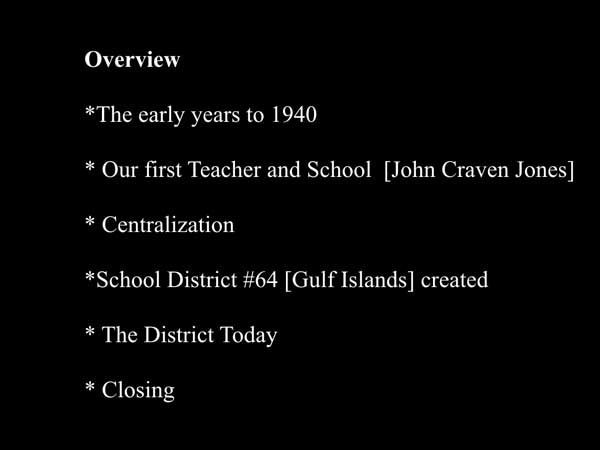 bob.002.jpg
bob.002.jpg
 bob.003.jpg
bob.003.jpg
 bob.004.jpg
bob.004.jpg
 bob.005.jpg
bob.005.jpg
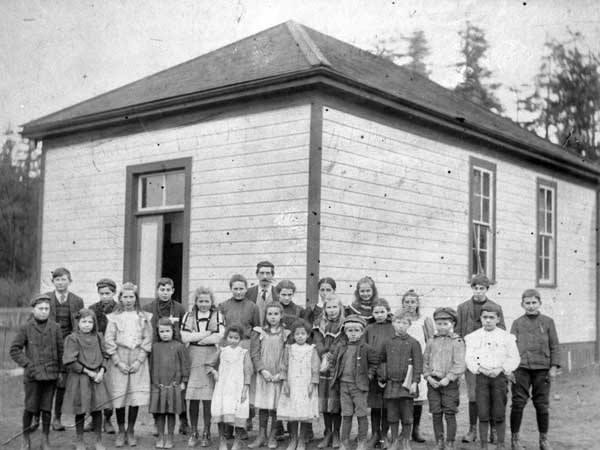 bob.006.jpg
bob.006.jpg
 bob.007.jpg
bob.007.jpg
 bob.008.jpg
bob.008.jpg
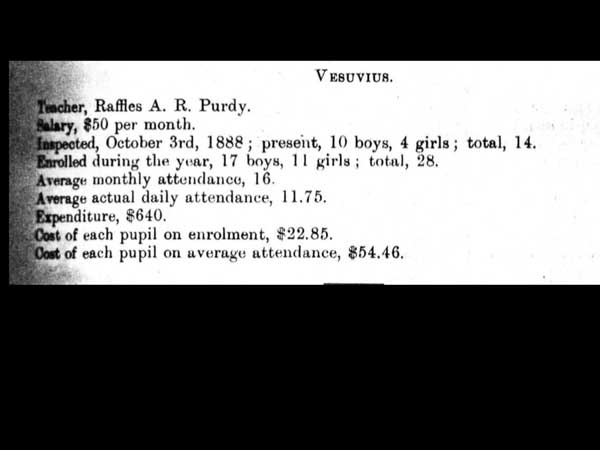 bob.009.jpg
bob.009.jpg
 bob.012.jpg
bob.012.jpg
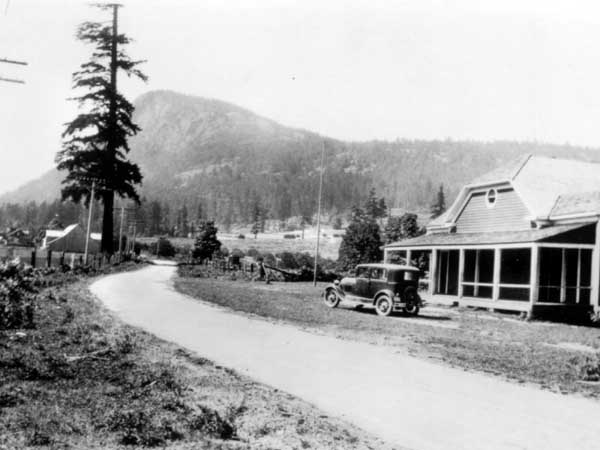 bob.013.jpg
bob.013.jpg
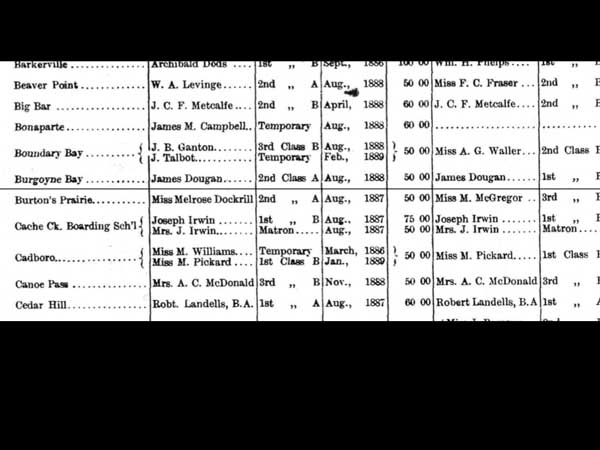 bob.014.jpg
bob.014.jpg
 bob.015.jpg
bob.015.jpg
 bob.016.jpg
bob.016.jpg
 bob.018.jpg
bob.018.jpg
 bob.019.jpg
bob.019.jpg
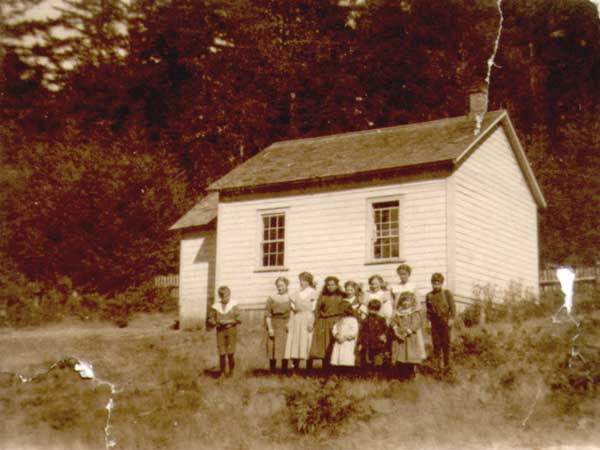 bob.020.jpg
bob.020.jpg
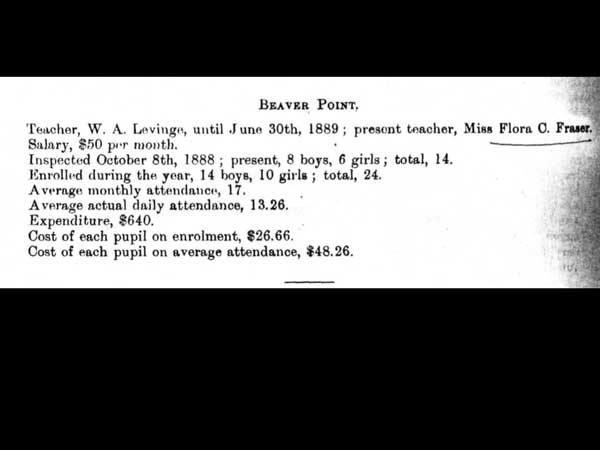 bob.021.jpg
bob.021.jpg
 bob.022.jpg
bob.022.jpg
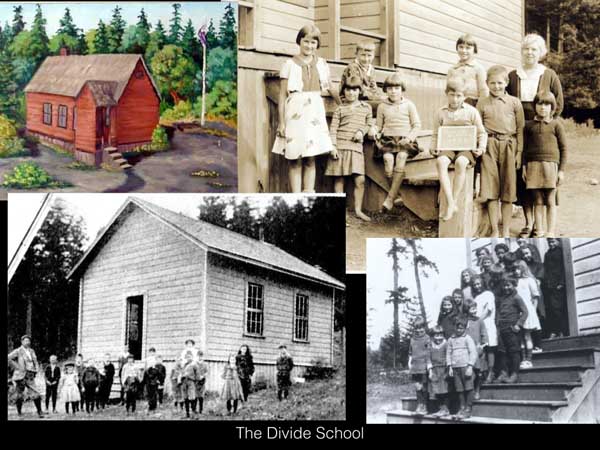 bob.023.jpg
bob.023.jpg
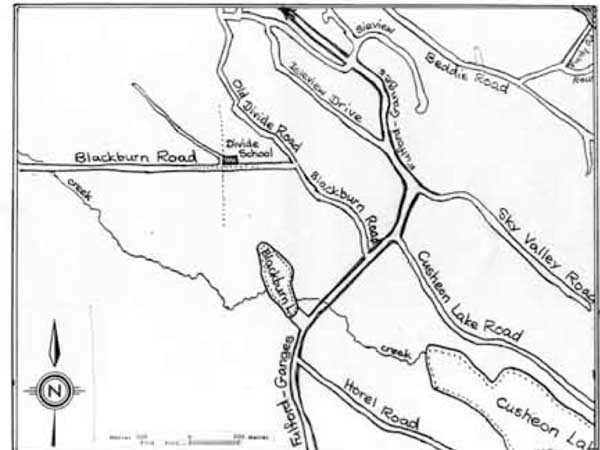 bob.024.jpg
bob.024.jpg
 bob.025.jpg
bob.025.jpg
 bob.026.jpg
bob.026.jpg
 bob.027.jpg
bob.027.jpg
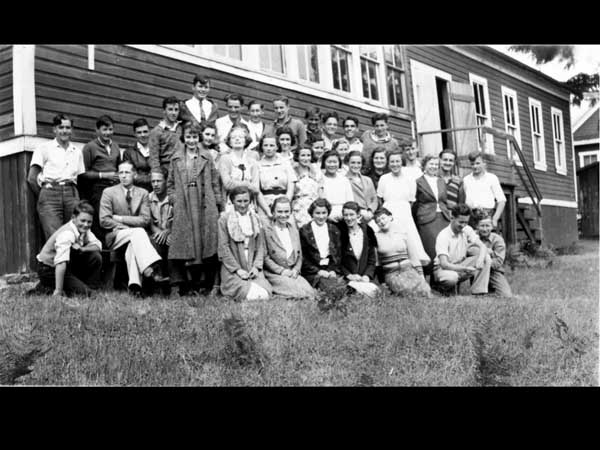 bob.028.jpg
bob.028.jpg
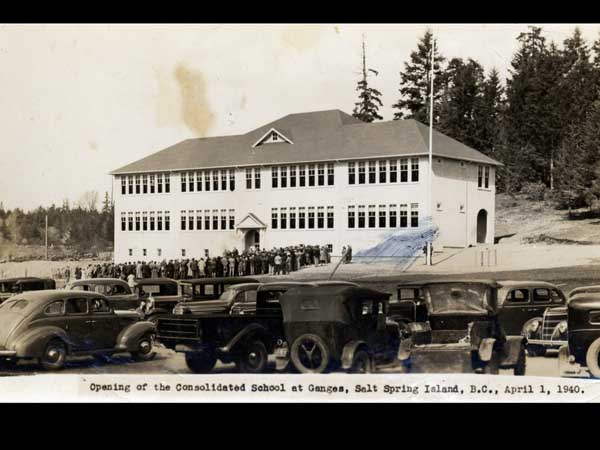 bob.029.jpg
bob.029.jpg
 bob.030.jpg
bob.030.jpg
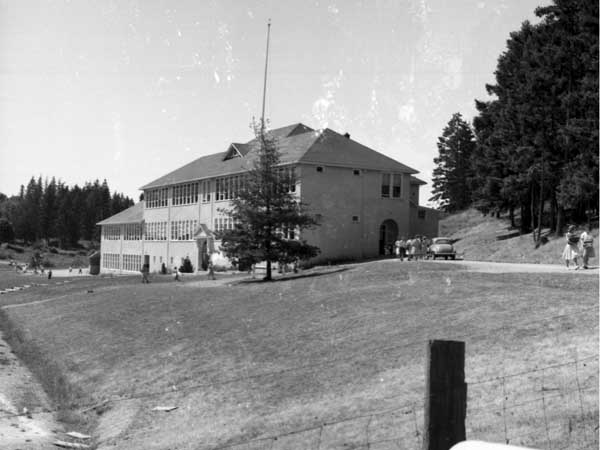 bob.031.jpg
bob.031.jpg
 bob.032.jpg
bob.032.jpg
 bob.032b.jpg
bob.032b.jpg
 bob.032c.jpg
bob.032c.jpg
 bob.033.jpg
bob.033.jpg
 bob.034.jpg
bob.034.jpg
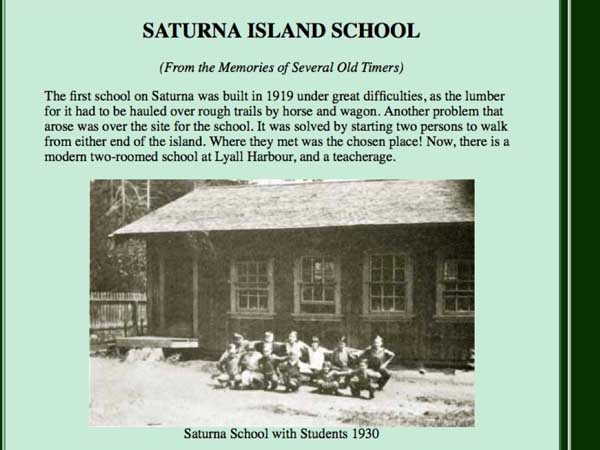 bob.035.jpg
bob.035.jpg
 bob.036.jpg
bob.036.jpg
 bob.037.jpg
bob.037.jpg
 bob.038.jpg
bob.038.jpg
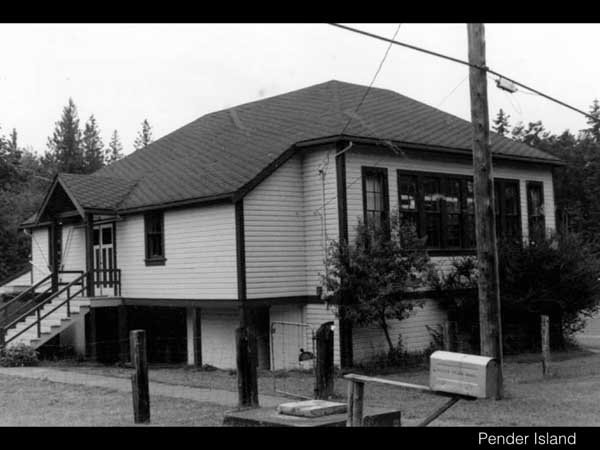 bob.039.jpg
bob.039.jpg
 bob.040.jpg
bob.040.jpg
 bob.041.jpg
bob.041.jpg
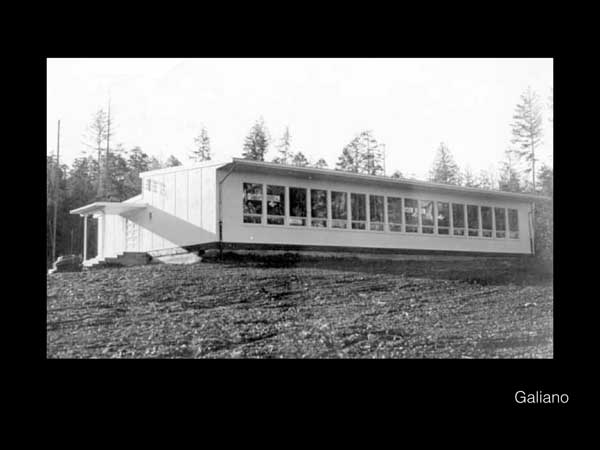 bob.042.jpg
bob.042.jpg
 bob.043.jpg
bob.043.jpg
 bob.044.jpg
bob.044.jpg
 bob.045.jpg
bob.045.jpg
279_McWhirter_Gulf-Islands-School-District_1859-2015.mp3
otter.ai
19.04.2023
no
Speaker 1 0:00
Today I'm going to start with an overview of my talk. I'm trying to do four parts to it. I know that some of you are familiar with some of the early years to 1940. Our first school teacher, John, David Jones, spent a bit of time talking about him. centralization of the school district, the school district that is created in 1989. Right. And then a little bit on the district today. The idea of the of the talk today is to give you an overview of all of the schools, not in detail, but including the Island schools, the galley AMI patrons. And so I'll give you my thought point will be a brief reading of paper, to give you an overview of the topics we're going to cover in the history. And then I have a series of slides and pictures and comments and things to put on later. And we can turn the lights down at that time. And it'd be better but I'm not planning on turning lights out right now. Because if any of you know me, I can't read very well with in the dark. I can read very well in the light that some of you don't, so we'll go on. Okay, on June 18 1958, a special meeting, I'm sorry 1938 special meeting was held to the qualified voters of the Ganges Harbor School District. And they were asked to vote on the following resolution that this district is in favor of consolidation of the rural school districts of Burgoyne primary Marsh, the divide, Ganges Harbor, North Vesuvius and Vesuvius provided the Department of Education gives sufficient assistance to the consolidated district to enable it to finance at the tax rate of not more than six mils. So you can check the tax notice and see what your school taxes are now, I think they're a bit more than six mils. The taxpayers voted on this resolution and the result was 109 103 in favor, and six against the consolidated school district became known as sultry Island United school, and was to enroll grades one to 12. This resolution came about because of the following reasons. The first day in school west of the Rocky Mountains was established at Fort Victoria, and 818 49 and in 1862, the first mainland school opened in New Westminster. In February of 1856, the Executive Council Vancouver Island appointed Reverend Grinch a one man committee to report on schools. This appointment today is recognized as the first appointment of the first superintendent of schools in the colony and province at this time, the call in the province were separate entities. The first school Act was passed in 1865. And it established a higher centralized school system with the governor of the colony, and an appointed nine man General Board to oversee the education programs. In addition, the governor appointed the superintendent of schools, the teachers and school trustees. The board alone was responsible for the school districts, class preparation curriculum and textbooks. And all the duties of the trustees and teachers were determined by the centralized school board before the Civil War broke out, and this is going back again to the United States. Many blacks moved northwest into Canada, taking and seeking their freedom. Some of these arrived in Victoria in the 1850s and Sir James Douglas, and the Hudson Bay Company gave them land on the various islands and salt spray was one of the islands they preempted the land. Many of them settled on Saltspring Island at this time, and the first teacher in Salt Spring Island came from this group of blacks. His name was John Craven Jones and I'll talk a bit more about him later. He moved from farm to farm providing formal and informal education. His school was not a school, it was basically in barns, sheds, kitchens and so on for 10 years or so, as he moves to the north end from this part of Salisbury north up to Furman and in the various properties in between as the population increase in Salisbury Island demand spoof to formally adopt another educational system and to finance school from Victoria, in 1864, permission was granted for the school to be established at Central, which would serve the northern part of Saltspring. Island. That's an 1864. Mr. Jones wants to be the first teacher and to be paid an annual salary of $500. But he was not to be given any retroactive pay. Remember, he'd already been teaching for 10 years. So you've done his job at $500 annually. Central School was the first school district in Saltspring Island. Now explain that each school was a district unto itself. You have Central School, is a school district. And it's a one room school. It has this board of trustees of three members who are appointed by the government. And their job is to fund and finance the school. So of all the schools in BC, there's over 801 group of schools at one time, they all have their own little board of trustees, and their own financing arrangements. And also some of that too, later on. Central School was the first one that she consulted on, and like others that were to be established in development engine had a three man school board and runners affairs. In they were to see that there was textbooks, they would see that the facility was built, they're responsible for building it. And they were also to tax the ratepayers to pay for it. So how to report minutes and to post any resolutions domain data school to see the school function according to the regulations. In addition, they had to report the enrollments administer the government grants and hire the teachers. They did so at this time, pointed or dismissed teachers have their setups or fix their salaries, they did not fix the salaries that are fixed by the grants given by the number, which averaged between 40 and $50 a month at this time. Now we've heard about the teachers have moved around. We'll talk about that a bit. But most of the time, the schools often had little places built into them where the teacher could live. With the formation of the school district and up the invitation vote of 1939 there were eight separate school districts established on Salt Spring Island. In addition in the 1920s Ganges and becoming a hub of the island and then the public secondary education program was to be established there. In 1925. The increase enrollments caused the high school students to be moved to temporary chicken house accommodation. They call it the chicken house school used to exhibit poultry on the farm resistant rounds right beside the man hall area where the elementary school is located today. And this school was finally called the chicken house. And I know that some of the people who went there still referred to it with a smile on their face. It looks wasn't quite as bad as it sounds. But that's what it was the respondents to the unification where the transportation had improved sufficiently on the island, so that people could be moved. Before that it was all you walked or rode your horse or whatever, but there was transportation the roads were better, but it still led to some problems on Saltspring Island. And so we have the idea of having a Unified School District. And I listed on the upper part here, the public schools that existed in salt street or on South Street, and there was a large number of private schools as well located on our island.
Speaker 1 8:46
Bigger point school was closed in 1951. And it was considered to be the oldest continuously operating one room school in the province of British Columbia and closed today. It still operates as a daycare, cooperative school. It's called The Little Red Schoolhouse and it's located directly beside the beaver point Hall. Okay, other school districts were established, as the need arose with the first otter Island School established on main island in 1893. The school was the sort of sub Galliano main island some students from Staten Island born on the island who attended school there. In 1994. A replacement school was I'm sorry at 94 replacement school was constructed in two main island. And this now a new school is now the present school library of the new main island school as a whole new school around the old school. Residence of Pender islands established North Pender Island School in 1893. And South Padre Island in 1925. The southern school closed in 1941. And one of the things that happened to a lot to the islands, those three, three things happened to them. We had the depression, which caused a lot of turmoil in the smaller communities in schools. We had the war, of course. And then we had the invocation of the school district. The idea of the consolidation of schools was to get all of the schools into larger units for administrative functions, and this was from the government, people who be in Victoria. So of the 800, schools, districts, eventually they get down to 72. And I'll talk a bit about that in a few minutes. So we have on on the slide the early schools and assaults radon and you can see them listed there. They're all familiar names to most of us. Just go through this list here to go through it with you. In 1946, under the unification in 1946, sultry and outdoor vines have the following schools in place Saltspring Island United fever point Aliana North Isabella point, main island, and DryLin Saturna Island, silvery and South Kalyanam. The three schools in the south end of the island, Isabella point, going for a while, and beaver point, when the amalgamation took place, they continued to operate for a few years on their own, and 1951 they formally closed and their students were then moved in bus to Ganges. So even though they went to unification and the original motion called for all the schools to come together, the trustees recognize that transportation was a problem. And so they ended up allowing those three schools to operate. For elementary students only high school students were moved into Ganges. And so finally, after all the invocations took place and all the schools took place. The school district ended up with the following schools as being the base in 1953. Salts rate elementary High School, Galliano superior main island, Pender Island and Saturna island. So the 16 schools one room schools that existed in the Gulf Islands up until that point, were amalgamated and ended up being five schools, one on each island basically. Now Galliano superior doesn't mean to say it was in Superior school to the others. What it means is went to grade 10. That was the term they use in those days to differentiate between high school or secondary school and elementary school. Okay. And this is a picture you're familiar with our Central School, the old lock school that was here, first, out on the far side of the parking lot, you see the school buses arrived, and the kids are all lined up, ready to go. Typical of the time now, John Craven, Jones, I got it. This is just in here, but this is the our member Arthur Campbell, Alfred Campbell, he painted a series of murals which were around town, but some of them were in the harbor House Hotel. The last one is left is the map right across from the church in Ganges just on the harbor side. But he painted all these trends of Saltspring history and they're all around the hall. I'm doing the hot harbor house renovated. A lot of these things disappeared and got broken, but two are saved. And the height Historical Society had them and we gave them to the farmers Institute, which are they've installed in their museum for the new the new way that Raymond Jones was the first teacher and this is just showing how he tried to operate through the through the area. Central School, the new school, the log school. This was right here beside the hall. Typical inside a classroom. There were certain features of the one room school that I mentioned earlier, but the teachers responsibilities were to make sure there was fire was in it and the fire wood was in place and that school was warm for the students in the morning. Every of the schools there's no power electricity, of course, so they used lamps and another job in the teacher was to make sure the lamps work. And thirdly, they all had outhouse, of course, fixtures out in the back. And so they existed as self contained units. They became the central places of the of the communities they served. They became the meeting area and they became sort of the social center of Are there little states I remember these are called school districts at the time, they had a group of trustees who were responsible for maintaining them. Another inside shot of school. These are pictures we we've picked up over the years. They're not necessarily the spin quality of the light, but they're what we have for that here. Okay, the Vesuvius school was this is a government report for the year. Teacher was raffles a are pretty salary $50 per month, is inspected on October the third 10 boys for girls for total 14, they had to have 10 students, if the schools opening a lot of the schools closed, through the years, we look at the history of them, they'd open for a few years and then close because the students move away and then they'd open up again, when they had their 10. They had 28 through the year. So there's quite a bit of average day monthly attendance from 16. The average daily attendance was less than point seven, five, somebody was probably only in kindergarten or somebody expenditures $640 a year to operate the school. And those are the expenses that they got from the Ministry of Education to to operate and that's what the school district had to the money they had to operate the Soviet school which was central facilities school, this area right here
Speaker 1 16:47
okay, this, this shows you the map. So where are some of the schools located? Just give you an idea of of what happened to you. This is a topographic map. And if you look at it, you can see the hills and valleys and you'll see why most of the schools operated in the agricultural areas which makes sense because that's where the people were living on the preempted land. So you have the fever Point area. You have the vertcoin Valley, which goes from Burgoyne Bay to Fulford harbour, often called the Fulford valley, but legally it was the Burgoyne Valley because in the days when these were active, the entry point was there. Most of the things came from this point on into into the valley and then moved up this way. Fulford itself was not too established at the time wasn't until later when the first BC Ferries and some of those changes. So we have the beaver point farms over here, the rockville farms and the Trekkies and the balance of Trekkies in this area aprons and this area. The vertcoin Valley School was located. This is a formal picture of the Burgoyne valley schools still exists today. You know, the United churches in the valley, as you point out in Fulford are down to Fulford and Brookline just at the bottom of leaves him there along about halfway is behind a roll of hedges this way that's been converted into a private house. The school was built a little differently than some of the others it did have a living accommodation in it. And it operated till 1951. There's another picture coming in a minute, which shows you the road. That's the school air. I'll give you an idea of the of the Burgoyne Valley and the type of roads that were area in the farming area and Mount maxvill in the background. The road to Ganges was this road all the way through and not not suitable. So that's one of the reasons why the school buses were delayed for a few years. But now this is another report that we get each year from this this era to go down to see beaver point, name of the teacher, second class certificate, a certificate, August 1850 at work there, that paid $50 a month and the next year, Mr. Fraser replaced him and so on. So every report every year, every school in the province of British Columbia was listed on these rules from the Ministry of Education and outlined the salaries paid and the names of the teachers and the qualifications. And he goes his disposal along this names the three members school board for each of the schools. Number one was the treasurer and number two is the Secretary and number three was the treasurer. Basically, it's all work. They're all appointed by the Ministry of Education, and they all perform their duties. beaver quite. Another thing that they did in these schools is burgling Bay and beaver Boyd is that each year the Ministry of Education would give elementary certificates of merit to students. One for proficiency, which is the first one here, one for department, which is this one here, and one for attendance, which is this one here. And so you can see, as you look at this, that all the students are listed in every year, the minister and the superintendent would come over to the school and present them to the to the students based of course on the teachers recommendations. What's this word phrases? Yeah. Okay, just to refresh. There's a school central Burgoyne fever point north and divide and Isabella point, cranberry Marsh Ganges and chicken out school. And then finally the consolidated school. 1234567 private schools are mostly located in the Ganges area. And they had their own way. Here's one of the public schools roll of honor. Present presented to miss mullet, lascivious school now, it's what's the date your date of that one, right there at 98. Public school report card in charge to read this one, but down the side here are the the forces that were taken during that year and the marks that were achieved. And you can see that quite a rigorous curriculum. When you look at it, you have all all the language arts, geography, English grammar, then it goes through Big History, English history, you have all of the various mathematics and bookkeeping and so on. Over here are other courses they can take, depending on the type of school or in this is the third class grade A certificate public school teachers exemplary that was a teaching certificate. So when this person was at university, that was their curriculum they studied
Speaker 1 22:29
this is beaver point, which I mentioned that earlier it was the oldest existing continuing school up until 1951. It's been renovated, changed and so on. But this is the pitchers this was basically started by the reco family and the McClellan family is their children who grew up in when Glen Rocco was alive she used to talk she went to that school but not way back this but a lot of the kids had to ride their horses to school and so on but that was all part of growing up in Beaver point. This is the school $50 A month again, you can see all the data here are all consistent. So there's very little flexibility it was all centralized system all the way from Victoria, and there was no no chances to change it locally. And the curriculum and the exams were all based on everybody doing the same thing. This one is Hillsdale point school you can go down to this site now I know that because Paul and I have another site there's no no remains of this school on the site. There is a platform but the school on an open and shut depending on the number of kids formerly closed in 1951. The Divide small pitch was this significant this picture done the needle?
Unknown Speaker 24:06
No. I'm just painting
Speaker 1 24:10
Yeah, that was his mother right there. This role this is the original school so the divided school is divided school was located just off Blackburn like lacquer lake on the on the land side. Lucia who's part of our group but actually her house fronts on the are one of the corner pins of her house is actually the corner pin of where the school was located. And there's the map right there. So here's the old divide road Blackburn. And the school is right in that area. February March, this was up up as we call the primary up into the mount maxvill area. There's not much left of the school you can find remnants of it but it's pretty well disappeared it was closed already. Obviously. very rural area there's not not much around 1927
Speaker 1 25:27
Now we get to again G united. Again G central This is the man Hall. This is the chicken house school as they call it. It was a series of buildings which they renovated into a high school. And the kids from the island moved into Ganges to take their grade eight to 12 as the rest of them this time we're still in the elementary districts. And picture of some of the groups there. Mr. foobar Sir, who was well known principle on the island before and after World War Two the new elementary school opened 1960 1943 That's their that's the school that still exists today. Of course the basic core of it. And it was high school was across the top floor basically elementary kids were across the bottom floor. So it had ended up being in grade one to grade 12 school. And this is this is another picture of one of the classes. He recognized that fellow right there is in the audience
Speaker 1 27:00
the school in the 1960s had an as you can see how to an addition put on it for classrooms. And this tree here it was planted to commemorate 1939 George St. George's sixth visit to Canada. It still exists today. Hold it open the flagpole and play area. And that was the last sort of of the changes before the school district began to split up again. Now I'm going to just briefly look at a couple of the private schools because they have an important partner and these were located on the Ganges Hill this one here down here was the building still exists
Speaker 1 28:04
and this particular building was up on the hill behind where the block gas station is not that long. No that's the one Donmar written part was the motel is it on Bittencourt road Seabreeze debris area you'll see one of the schools was later they had been funeral pyre and that was that was located up where the temporary library was up in that little hole there was
Unknown Speaker 28:35
up in there so this is the Gulf Islands district as we know it.
Speaker 1 28:42
These islands here are not part of the school, the school district. So Turner made north and south Pender those verses one there there's a break there for Ebola which never has had a school on Galliano, which is one time I had five schools on it. And Celltrion which had eight schools, school districts. So turn Island. This is the original school being built. You can see it's presently a cemetery site. It moved from that school to this school. 1930 And then they decided to rebuild again. This school about 1960. The story is according to the outer islands there the workhouse security people couldn't agree with the new school was to be built. You've probably heard this before. So they had two people walk one from the south, one from the north. And they met and that's where they built school. And John Money happened to hold that piece of property. So he gave half of it to the school district. And he's the school district bought the other half from him. This is Pender Island portable school. Roberto Woolcock the teacher. This is the Pender Island School in 1908. The original school as a church is still there today the school is still there. It's used as a community resource center, new to you clothes and things like that vendor had the same problem as all islands when they start to go to schools, where do they where do they move it to? This is the old school just before coast, interesting, I was principal that school at one time. But that was a lot of distance principalship because in those days, they used to have head teachers, so there'd be a head teacher there and one principal in charge of all the district schools and North Galliano school could see a similarity between them. They're all sort of built in planning. This one has a living accommodation built onto it. And that school closed at when they centralize the schools and Galliano. And this is the same school with some of its students in the sad part is we can't recognize or identify most of the students. Galliano is going to school main Island School add on, and that basically is the way it is today, although they've added a bit more since that picture was taken. Literally on here. Okay. First January part of the Superintendent of Education 1872 for the school district Saltspring Island School District forum July 30 1870. Boundaries, outlines the boundaries official map assaults rate or admirals island because they're still referred to salt spray at that times admirals Island. Mr. JC Jones is teaching under a temporary arrangement till the end of the year, salary $40 per month, visit the island on June the 27th and 28th found the teacher engaged at the northern or banks settlement where school had been kept for three months previously. Okay. 48 was examination day, but there are only three pupils in attendance. Two girls and a boy. The boy was right here in Latin grammar having become such a proficient in English grammar and studies were dropped a year earlier and Latin substitutes some of the examination of these branches. And arithmetic today did not by any means.
Speaker 1 32:55
Every no did not by any means establish the fact that for proficiency. In other words, the kid getting into very well. Teachers time compared the wasted. They were going between the middle of northern and South settlements. Circumstances do not work as more of the children are more than three miles from the schoolhouse. And the school is improving nearby and the road is improving. You're right here. There are 25 children's school age in the two settlements. Okay. Now look. Jones used to do is when the two school houses were built, you have the log happened at Central Indiana none of them will need to have been settling up in the forbidden area. He would go back and forth every three months between the two schools and teach different group of kids and what the superintendent say is that was a waste of time it should have all come to the to the Central School. And then here the superintendent mentions that there's an interesting and thriving settlement between Burgoyne van Fulford harbour about three miles and extent several families are already located having about 21 children, about half of whom are of school age and application has been recently sent to the government asking for aid to erect a school house and pay a teacher. Okay. So we have birdwing just being established or being talked about in 1872. That was the second school district. And this is a picture of John Craven Jones, who taught on the island for 10 or 12 years. He was a escaped from the south. He was running from slavery like most of the blacks were in those days. He came to Hudson Bay Company in Victoria came to salt Street as a friend Ben Farber began to teach and formerly worked his way through establish the school at Central and then return after a few years to the south again to say visit his family, the civil Ward and and and things were better in those areas, you met a woman we'd gone to school with. And he stayed down there and did not return to South Australia to teach again. But he did teach in South Carolina. So we here's our first feature and one that we we tried to remember as part of our ongoing education, the history of the district. And that's the end of the that part. So, the water district today is, as the left starts in 1945, with the candidate report, the camera report was right after the war, we came and looked at all the school districts in BC and decided that he was going to so he recommended 75 and ended up 72. They divided everything out in the ballpark of the school district became number 64. And all schools consolidated so each item had one school. And that was how the district started out. In 1966, that was decided that imitate the psaltery Elementary School in the building, I showed you the consolidated school, and they would build a new high school, and some new high school is build up on top of the hill, build the belt on the secondary school number one is now the middle school. And the students moved up there in 66. And the school was established as a separate entity. In 1971 72, it was decided that sultry elementary would be broken out and that the kids who live north of central here would go to a new school like Berlin. So the first school was built in 1978, and site all the kids in the south end of the island should know the school on the south end of the island. So Holborn school was built. Then they decided to create a middle school and build a new high school. And then they built two alternate schools from Phoenix Elementary and Vedic secondary. And we ended up with eight schools on Saltspring. Exactly as he started out with so it's I guess, saying the more things change, the more they stay the same. And so that's sort of where we are. A couple of days. I just always like to mention multiple times because they are sort of recognized district in the province, they have some uniquenesses, four or five things you might find interesting for us, they run on a four day school week. That's for economic reasons. They have they have a great international program and about 70 Students come from around the world to go to school here be here, basically from China, Korea, Japan, Germany, and few more from something broken up. And they've contributed a lot to our Canadian school. We have about 70 students every day coming by water taxi from security, Henry Andreoli have attended school here. Although each of the other schools on the other islands as a as an opponent of high school education, they are considered great. Get an art degree 12 schools, they have electronic education, you go there to do your work on distance learning. And so some students just stay on the other artists on the high school has a golf outing performing arts school, you may have seen some of the performances from some of the kids who do dance and music and so on and international program. And we have a great French Immersion program from kindergarten to grade. I'm sorry for grade six to grade 12. So the school district has expanded its programs and as you may or may not know it continues to expand programs. Commercial continues to expand this program. Students on Saltspring now can take their patient programs for some of the courses right on salts, right. If you have a new chef, you can roll the chef program to high school here be a high school student and also the Wilson College student and get time off your apprenticeship program when you go off into your program. So that's really vital and all the other schools have all sorts of community based programs and so on. So that's basically just the the
Speaker 2 39:22
students that come on passivity is very good go to school here. There are we have
Speaker 1 39:31
school floor way the other way to come here, but there are students who come here from Crosman shittiness. Because of the for me, we we have a bunch going to done because of the four day week. So therefore it does sort of balances out. But yes, you're right.
Speaker 3 39:49
How would you go off the island to a private school?
Speaker 1 39:53
I think it's hard to say it's been as high as 30 I think so lense fluctuates back and forth. But most of you are going to private schools, Southern Oregon shaders, but then coming on the island as it fluctuates from year to year, sometimes it's been as many as 14 or 15, sometimes six or eight
Unknown Speaker 40:19
years yourself because we know you're here for a long time mainly on our area Saltspring or around the islands.
Speaker 1 40:33
This place started off in Dawson Creek when the chapter that was on gave us all 319 6665 school years and plotted the high school here geography and history and then I did some district work in schools and then went on from there to become a principal the school's director of instruction schools and now retired not about the history tell me how this John Craven job to support themselves just a farmer he donated his time or no parents they did something and everybody kept separately what they did on the items in the depression on salt, the Gulf Islands and they couldn't afford to pay the teachers they took that into their homes instead of John Craven showing Stacy you will stand by the people's basic consent people look back to you
Speaker 4 41:58
in the 1800s column where the teachers pay only $20 per year didn't have the increases
Unknown Speaker 42:08
certainly have since now if you go through the reports Yes, they did have
Speaker 1 42:17
the report I have salary reports I chose one but it also reports you can see injuries actually if you looked at that if you had chance one person on that chart was paid 7500 So that there they were differences but that was up to the local superintendent to to convince the mortgage pay pay most people extra but it was pretty standard it's interesting to note that there are over 801 room schools but in 1867 there were only nine now one of them was on the saucer in the restroom Victoria has been sort of the gold rush of 1858 but all sorts of people up through all through BC and a lot of them didn't buy gold and they stayed and so schools began to come there also there was a large number of First Nations and senators getting married and as their children grew up they formed enough of a background for schools to be established in Dalian North Carolina was basically established for for that type of marriage there's another big one on salt spring which had a lot of First Nations students so we had a lot of cultural schools if you look back to the school pictures we have we have a variety of more than we do not actually in proportion.
Speaker 3 44:03
What was the name of the school that eventually became the Catholic church
Unknown Speaker 44:08
that was going to be central elementary
Unknown Speaker 44:17
that was moved from was it in that location all the time.
Unknown Speaker 44:24
The whole part of the building was the whole downstairs of the church. Okay right there
Speaker 1 44:41
so not a lot of the resist anymore. And then there's the example one is this Brazilian value this favorite point this nothing in this area is not the divided schools fun. The not much left on the Yeah, very martial and there's absolutely nothing nothing it's it's pretty low.
Unknown Speaker 45:09
But on the other side smart the same way is that
Speaker 1 45:15
Israel benchmark and the divided schools Mark Fox all label
Speaker 2 45:24
it's about a school site still owned by the school district. Yes.
Speaker 1 45:29
They still a little school district there was bits and pieces of their souls on the capsule last night. The other islands schools on Pender Island, they have a school in North Pender and school themselves. And they move the school down to halfway between the two. So that's exactly on Maine they never move. This little school is built right in the center, basically the seven yards. Exactly. The same thing was secured by John Galliano Highland have five schools. And they were close they have open depending on how many kids are available North County as it was right up at the very top of that one of the room coming about halfway down from there, they'd be a school that retreat goes to school in there. There's one over in Montague harder, all the agriculture's down south Dalian which was located dealt with very locked down in that sort of area. And then Sylvie still was on reed island, which is a little island, just off the coast of Ghana on the east side. And now there's one school is the one of us.
Speaker 3 46:50
And did the water taxi come into existence in 1960, when they were doing all this or they initially,
Speaker 1 46:59
they started out, they took the old hospital building, which is now the vendor center up in the Ganges Hill, and then into a school dormitory. And for about six to about 71 or two that was a school dormitory, but then they became students for the school dormitory. So they began to pay room and board to people who wanted to take students and then it became more costly. And then the water taxi became more efficient. And Jackie came forward and said you've got to water taxis have to handle 50 people. They're like school buses except that are in the water. So it had to have a certain speed you get here at a certain time. And they went that route. And now you're gonna have the option to the moon born on psaltery. If you measure if you go back and forth, but will students go back and forth. But like you take people on a journey, they have to leave school for school at seven in the morning on the water taxi, and they get back home at six at night. So it's a lot of neighbors in there. Pretty interesting weather sometimes when the water taxis when you're bouncing around other schools. Phoenix wills are while they're at Phoenix Elementary, was designed to be an alternative school, hands on school school for learners who wish to be more free in their learning approaches. And I'll just stop there. There are all our schools, and there's a lot of our School on the island. And there's also a lot of sorry, school for younger kids. So yeah, I'll take them the Phoenix school wants to do get people who are homeschooling their kids, or who were wanting a different form of education to public school. So the first state school was started, basically using homeschooling parents and students. But now
Unknown Speaker 49:07
there was an alternative class itself. Prior to
Speaker 1 49:12
class there was gypsy program to online programs serving youth. Yeah, there's been bits and pieces of Phoenix as the outcome of that. But now Phoenix has become more of an established program. They taste though as an alternative high school program for kids who don't do well. They're interesting and they're not. They're designed for students who are less motivated. The high school was less motivated with the type of system that operates within the school. So they there was a program ran out of metal called the alternative. Dave again, my friend told him, they'd always had alternative programs, but these are more formalized into standalone school.
Unknown Speaker 49:58
They started having KIPP is different than the required parental involvement. Parents were very much more involved in programs and they are.
Speaker 1 50:13
Well, there's, there are alternative programs I mentioned, there's a program called Wolf, which is an outdoor education based program operation on the forefront Valley, which has a great group of students involved in it. There's a salt rate Center School, which I mentioned, and it's located blacker Lake, and it has lots of students in there. And there are other smaller programs that are running loose organizations, such as for parents who get together to teach against the other. There's a group of parents on the island who have taken their students out of school and are being educated by the new elementary school district by the district learning. Now, one thing to mention, both on school district has a school in North of Windsor house, which is part of our school district, it was going to be closed down, it was not an alternative high school elementary school was going to be closed down because of funding issues. And the parents of that school approached our school district to see if we've taken over and school Mr. Trump's numbers that made sense. So we actually have 11 school and in the north man going into our house, and as part of our school district administration here you Mr. Career centricity. On the website, school district's website has. Anything else? Yep. Yep, it's
Speaker 4 51:43
a one school you showed us on the screen there. Kalyanam islands,
Speaker 2 51:50
they said the school added on the compensation and stuff with a teacher,
Speaker 1 51:56
teacher. All the other schools except salts array of teachers. But in most cases, they were separate from the school. They're either house down the road or they're awake. But in the old original days, they got away on the school because the teacher had to be there to meet the school, playing the school, getting organized and be on time and be there and be there after the kids. But those are the days when women agents should get married. And
Speaker 5 52:29
all those good days. We've had many questions pop up, going back to John Craven Jones, reading that Superintendents report that you put up on the screen. I'm curious to know, did he did he teach there long enough to see some consolidation of the school up there? Did he go back to the States before
Speaker 1 52:59
we saw the new school, and they knew they were going to go on a green line. So he was just on the fringe before the whole major expansion took place. So he was still
Unknown Speaker 53:11
so to speak. When he claims
Speaker 1 53:17
he did not he did operate on the launch school, but we saw a picture because you're three years old school up the road. And he had some some people our system to other black people in the system. And he was up north every Sunday here with the kids here. But no, that's hard to document that. We can
Speaker 5 53:39
definitely. My other question is of the various schools you've been discussing, how many of these have are private in the sense that there is a component of tuition paid by the public, or they also leave.
Speaker 1 54:03
There's three programs you pay for, I believe there's a program, what I mentioned briefly about the performing arts program, high school, that's a paint Page Program is a tuition fee. That is secured to have C programs outdoor education program there are some costs associated with that. And some of the programs are measured on the apprenticeship program. If there's some costs involved there as well. As long as your student you get a good break on this lots of Pisa. Every every school student pays pays for something amazing how much of that adds up to a few in Paris, the school district they are looking at. It does creep up on a lot of fields. it like field trips or not like we think. Now Tom Madison's gonna field trip to London, Paris next week to
Unknown Speaker 55:15
volleyball team goes to Hawaii to play volleyball.
Unknown Speaker 55:18
I mean, we're talking real field trips not going off to various farm chickens. I'm saying that's good or bad. That's the way it is. Well, thanks for your attention. I hope you